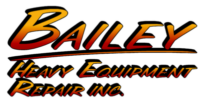Implementing Preventative Maintenance
A well-implemented preventative maintenance system can help your business by reducing waste and increasing overall productivity. The longer you can keep your equipment working, the more money you save. In addition, regular preventative upkeep can prevent sudden breakdowns and detect issues before they become a major concern. However, implementing maintenance systems can be challenging for many companies without proper planning. Taking the right steps makes the process much simpler and easier to design.
Steps To Implement a Preventative Maintenance System
- Know Your Equipment: One of the key steps in establishing an effective preventative maintenance system is knowing important data about your equipment. You need to know how old your equipment is, past repair history, how long your equipment commonly lasts, and overall failure rates. This data needs to be accurate and detailed as it is the foundation of your preventative maintenance and servicing methodology.
- Be Responsive to and Collect Feedback: Feedback is essential to implement maintenance and continuous improvement of your preventive maintenance processes. This feedback should come from involved parties, including not just maintenance staff but also users of your equipment. This feedback typically will take the form of process review, timeframe, and how long it takes to complete service requests.
- Slowly Implement Scheduling: When setting up any process or procedure, taking it slow is often the best approach. Start with the overall workload and how work is assigned. Then, write a weekly schedule, slowly expand that to a monthly schedule, and have regular meetings to review the workload and address any issues such as missed assignments.
- Make Use of Tracking Software: In addition to being informed about your equipment, you also need to be able to properly track it. Your equipment should be tagged and trackable in a central database. This keeps you updated on what equipment you currently have and makes regular maintenance and record keeping far easier.
- Track Jobs: When assigning maintenance work, many projects will be simple and can be finished that day. More involved projects can go on far longer, with some standard maintenance work lasting multiple weeks. Being able to track projects large and small is vital because it keeps proper records and ensures nothing important is missed or overlooked.
Final Thoughts
Preventative maintenance is a superior method for managing your equipment repair needs. The alternative of waiting for equipment to break down before repair can cause larger issues such as lost work and expensive repairs. Preventative maintenance is well worth the time and investment as it keeps your company’s production flow working and can reduce equipment repair and replacement costs.
